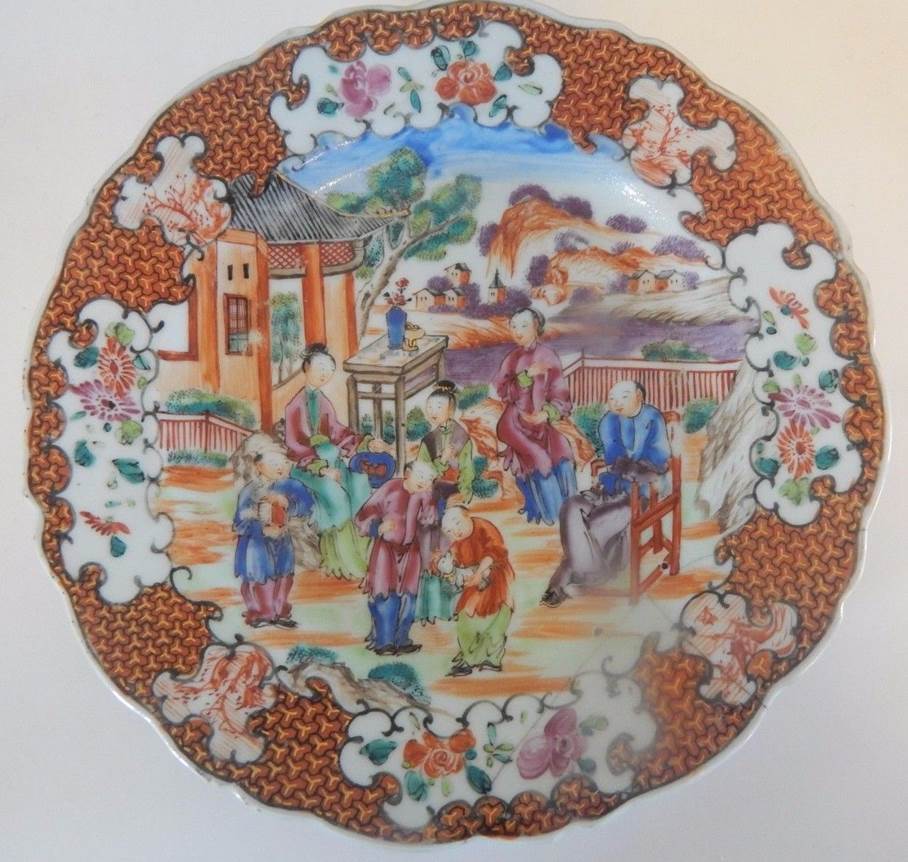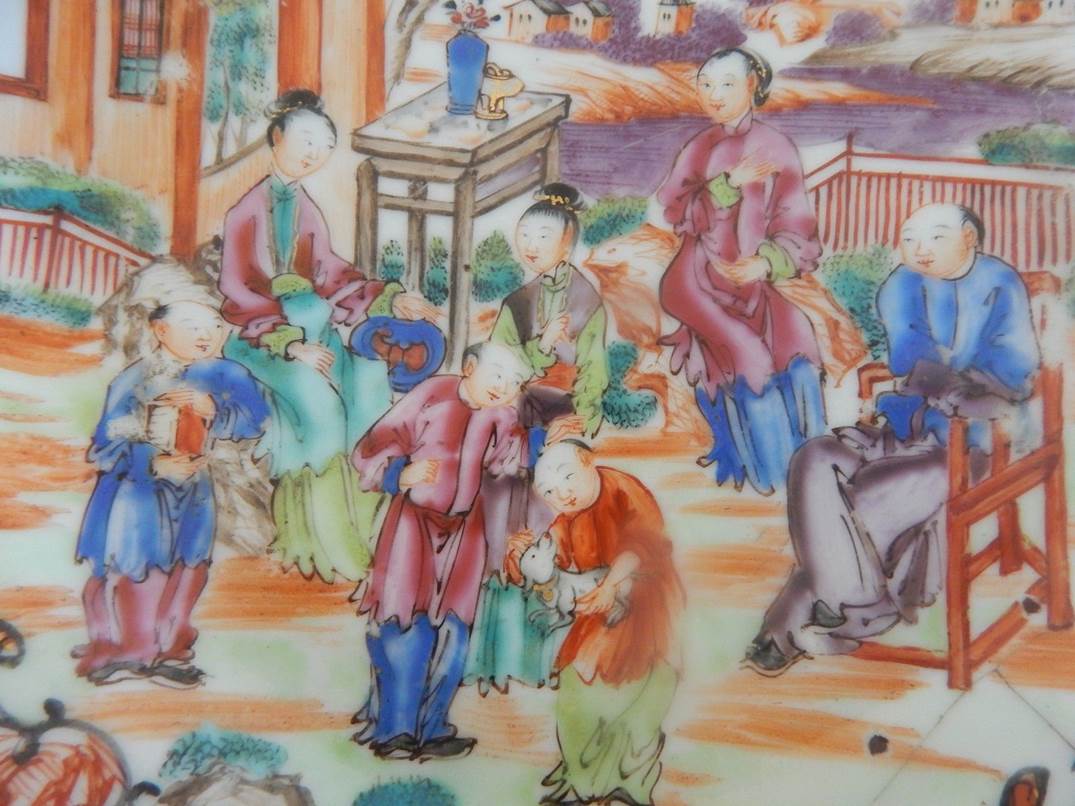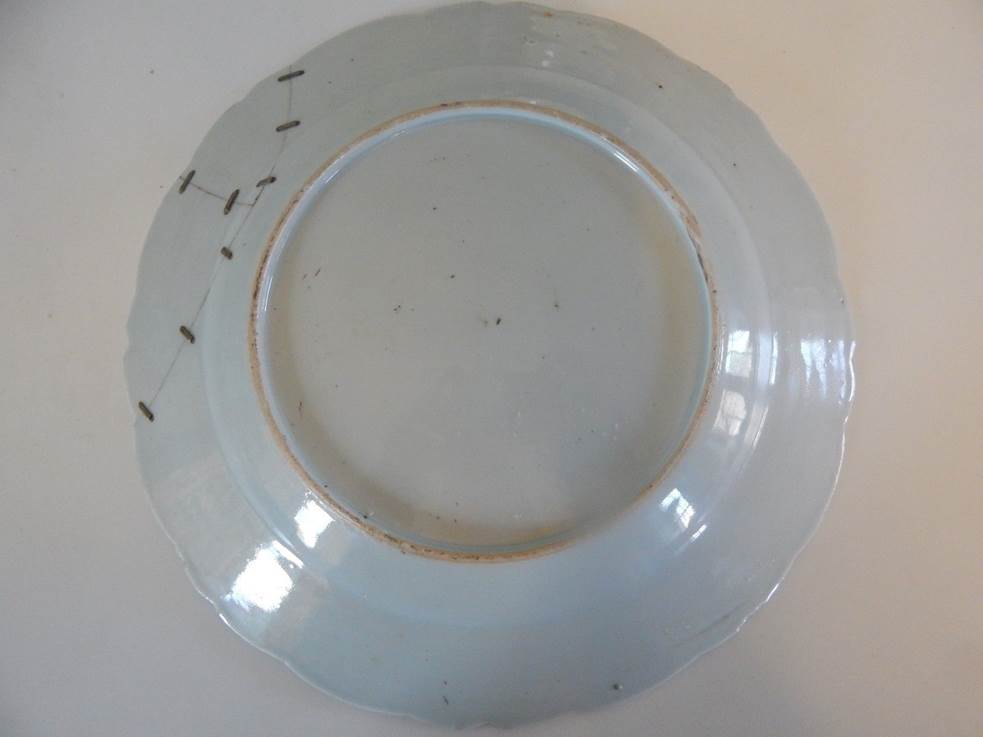
|
Subject:Re: 18th Century Qianlong Export Plate
Posted By: Bill H Wed, Jul 05, 2017
According to Tony Allen, as noted in "Allen's Antique Porcelain - The Detection of Fakes", this palette appeared in the late 3rd quarter of the 18th century. He also illustrates examples, including a teapot with the same Y-cell diaper, which pieces date to the fourth quarter of the 18th century. I've seen examples of the pattern in cabinets at Mount Vernon, the estate that was home to the USA's first president George Washington (1732 - 1799), whose term ran from April 30, 1789 – March 4, 1797. While not all of the household items seen in Washington's mansion belonged to him personally, they were selected by conservators of the estate as consistent with his period and the possessions he was know to have had.
Some sellers on the web try to describe the motif on your plate as being the "Rockefeller Pattern", but in my opinion, the classic "Rockefeller Pattern" has much in the way of opulent gilding on its borders. As an example, I've included a photo of a couple of soup cups I have in a variant of the Rockefeller pattern with the gilding but no Y-cells. The figures on the sides are, I think, clearly more consistent with Jiaqing porcelains made during the first quarter of the 19th century.
Best regards,
Bill H.



|
 18th Century Qianlong Export Plate
18th Century Qianlong Export Plate  ( China & Japan ) - Bokaba - Jul 03, 2017 (07:51 PM)
( China & Japan ) - Bokaba - Jul 03, 2017 (07:51 PM)  Re: 18th Century Qianlong Export Plate - plasticman - Jul 04, 2017 (01:25 PM)
Re: 18th Century Qianlong Export Plate - plasticman - Jul 04, 2017 (01:25 PM)  Re: 18th Century Qianlong Export Plate
Re: 18th Century Qianlong Export Plate  - Bill H - Jul 05, 2017 (12:52 AM)
- Bill H - Jul 05, 2017 (12:52 AM)  Re: 18th Century Qianlong Export Plate - Bokaba - Jul 05, 2017 (02:18 AM)
Re: 18th Century Qianlong Export Plate - Bokaba - Jul 05, 2017 (02:18 AM)  Re: 18th Century Qianlong Export Plate
Re: 18th Century Qianlong Export Plate  - Bokaba - Jul 05, 2017 (07:34 PM)
- Bokaba - Jul 05, 2017 (07:34 PM)  Re: 18th Century Qianlong Export Plate - plasticman - Jul 06, 2017 (01:50 AM)
Re: 18th Century Qianlong Export Plate - plasticman - Jul 06, 2017 (01:50 AM)  Re: 18th Century Qianlong Export Plate - Bokaba - Jul 07, 2017 (01:07 AM)
Re: 18th Century Qianlong Export Plate - Bokaba - Jul 07, 2017 (01:07 AM)  Re: 18th Century Qianlong Export Plate - Bill H - Jul 08, 2017 (12:35 AM)
Re: 18th Century Qianlong Export Plate - Bill H - Jul 08, 2017 (12:35 AM) 




